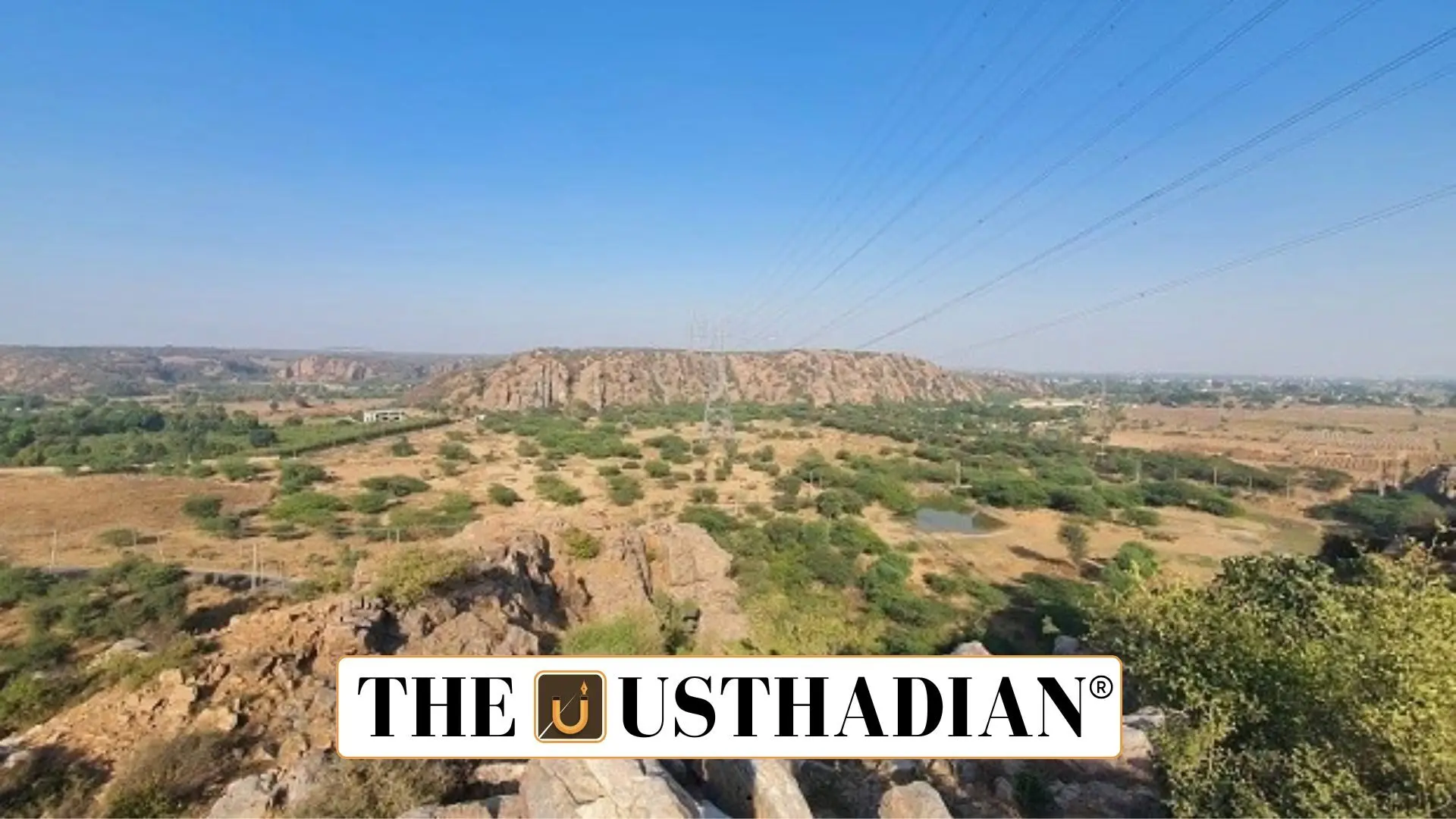Breakthrough in Early Human Settlement Studies
Prehistoric Discoveries in Mangar: Unearthing Human History in the Aravalli Range: Recent archaeological discoveries in the Mangar region of the Aravalli Range have revealed vital insights into India’s prehistoric era. Experts have unearthed handaxes, cleavers, and other Acheulian tools, dating back to 200,000–500,000 years ago, linked to the Lower Palaeolithic era. These findings establish the presence of hunter-gatherer societies in the region and mark Mangar Bani as a crucial site for understanding the evolution of early human activity in India.
Aravalli’s Geological and Cultural Significance
The Aravalli Range, one of the oldest fold mountain systems on Earth, stretches over 670 km, passing through Delhi, Haryana, Rajasthan, and Gujarat. Its highest peak, Guru Shikhar (1,722 m), is located in Rajasthan. Formed during the Proterozoic era, the range is part of the Aravalli-Delhi orogenic belt, shaped by cratonic collisions. The area is abundant in natural resources like zinc, copper, and marble, and is home to important rivers such as the Banas and Luni.These geographic features made the area ideal for early human habitation, both ecologically and economically.
Mangar Bani: A Biodiversity and Heritage Site
Located near the Delhi-Haryana border, Mangar Bani covers 677 acres and is not only a sacred grove but also a thriving ecological zone. With 240 species of birds and mammals like leopards and hyenas, it offers an ideal backdrop for prehistoric settlement. The discovery of Upper Palaeolithic cave paintings depicting animal and nature motifs reflects the artistic impulses of early humans, enriching our understanding of their culture and lifestyle.
Scientific Analysis and Research Efforts
The archaeological team, led by AAHRT and CEDAR, uses thermoluminescence dating to determine the age of the artefacts. This method measures radiation accumulated in stone tools since their last exposure to sunlight. Nearly 200 tools have been uncovered so far, and their systematic study helps reconstruct the subsistence strategies and mobility patterns of early hominins in the Indian subcontinent.
Threats to Heritage and Conservation
Despite its importance, Mangar Bani faces threats from real estate development, especially following the Forest (Conservation) Amendment Act, 2023, which weakens the protection of unrecorded forests. Conservationists argue that such legislative gaps may accelerate habitat degradation and result in the loss of archaeological treasures. There is an urgent call to recognise and preserve Mangar as a protected archaeological and ecological reserve.
Way Forward
To safeguard both India’s prehistoric heritage and ecological balance, experts emphasize the need for formal recognition of Mangar as a heritage forest zone. Continuous scientific documentation, protection from encroachment, and public awareness are crucial steps to ensure the long-term preservation of this invaluable site that bridges the natural and historical evolution of India.
Static GK Snapshot for Exams
Prehistoric Discoveries in Mangar: Unearthing Human History in the Aravalli Range:
| Topic | Details |
| Region | Mangar, Delhi-Haryana border |
| Mountain Range | Aravalli (Oldest fold mountain system) |
| Age of Tools | 200,000 – 500,000 years (Lower Palaeolithic) |
| Tool Culture | Acheulian (handaxes, cleavers) |
| Peak of Aravalli Range | Guru Shikhar, 1,722 m (Rajasthan) |
| Cave Paintings | Upper Palaeolithic (animal and nature motifs) |
| Dating Method Used | Thermoluminescence |
| Research Organisations | AAHRT and CEDAR |
| Biodiversity Highlights | 240 bird species, mammals including leopards, hyenas |
| Threat to Site | Forest (Conservation) Amendment Act 2023; urban development risks |








